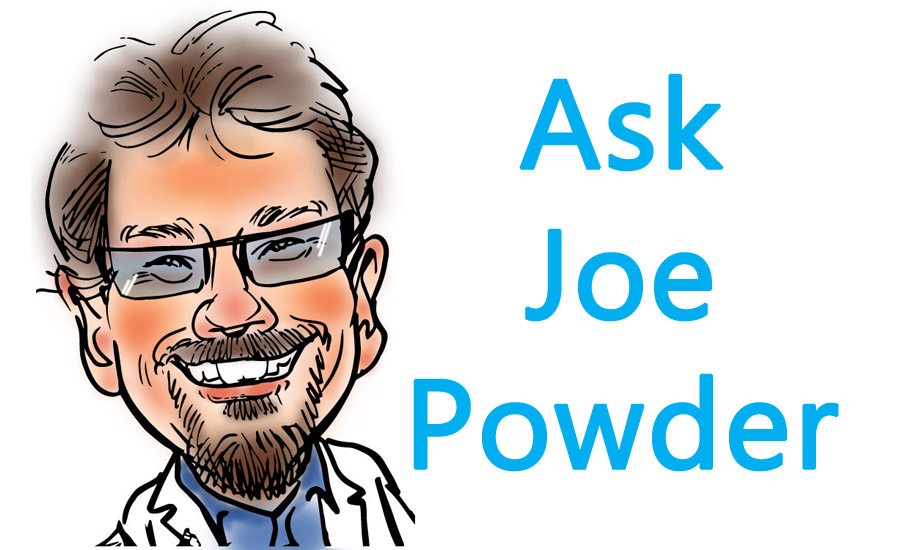Hello Joe,
I have a question for you about allowable oven temperature variation. Our ovens were recently calibrated and were 1° off from our control unit reading to what was measured inside. Due to our ISO regulations I may possibly need to shut them down until it is exact. I know temperature variations are needed to keep minimal but this sounds ridiculous. Our powder manufacturer’s technical data sheets are specific in their writing of proper cure (20 minutes at 400°).
What is your knowledge on what is acceptable and what is the best way of documenting this? Should I approach all of our manufacturers and have them revise or state what is acceptable?
Nathan Bishop, Powder Coat Supervisor
Hello Nathan,
Yes indeed, this is way overkill. Virtually all industrial ovens in the coatings industry cycle over a reasonable temperature range. Tuning an oven to an exact temperature is outside of the design of an industrial oven or the needs of curing a coating, powder or otherwise. Although technical data sheets do not explicitly state that a temperature range is acceptable, a reasonable swing of +/- 5 °F is acceptable. What is most important however is the actual part temperature, which in turn affects the curing condition of the coating that was applied. Even with an oven cycling temperatures over a modest range, the part temperature changes less than the oven air temperature due to the mass of the part. So if your oven cycles +/- 5 °F, the parts depending upon their mass may be cycling +/- 2 °F, which is totally acceptable for conventional powder coating technology.
Please implore your ISO Nazi to reenter the real world of industrial processes.
Best regards, Joe Powder
Joe,
Is there any truth to shot blast being able to “impregnate” oils in the surface of steel? I have a product that gets E-coated off site, and I want to shot blast the product versus hand cleaning, but my customer is concerned.
Eric Groos, Detroit, Michigan
Eric,
Your customer has reason to be concerned. Shot blasting can be a very good metal preparation process before powder coating or painting a metal surface. The issue develops if the shot blasting process is sloppy. It is imperative to have clean blasting media. If the blasting media gets contaminated, yes it will embed the surface with dirt and oil. The microscopically embedded contaminates will compromise the corrosion resistance of the finish.
This doesn't mean shot blasting can't be used as a pretreatment; it's just really important to keep the process and media extremely clean. In fact a good shot blast process is better than simple solvent cleaning because the blasting, when done correctly, provides better adhesion. This is because it creates a profile on microscopic peaks and valleys that allow the coating to 'bite" into.
Let me know if you have any other questions.
Best Regards,
Joe
Hi Joe,
What is the best way to performance specify the powder coating of steel. With aluminium I can use AAAMA 2604. Is there something similar for steel?
Thank you,
Dennis L. Hacker, AIA, CSI, CCS, CCCA, LEED AP BD+C
Specifications Writer/Manager/Senior Associate
Fanning Howey
Hi Dennis,
I have been asked this question many times. As you know it is rather easy to find an exterior architectural specification for powder coatings applied to aluminium. The AAMA, Qualicoat and GSB specifications are perfect strictures to guide the architect, fabricator and finisher to meeting the durability requirements for a specific end use.
The task is not so easy for specifying powder coatings for steel substrates. What I have found is the need to borrow specifications form organizations that cater more to liquid paint technology than to powder coatings. Our colleagues at SSPC (Society for Protective Coatings) have good specifications for exterior-grade liquid paints. Their SSPC Paint Specification No. 36 Two-Component Weatherable Aliphatic Polyurethane Topcoats specifies coatings for three different levels of durability. Specifically they delineate the following:
SSPC Environmental Zones
- 1A (interior, normally dry)
- 1B (exterior, normally dry)
- 2A (frequently wet by fresh water, excluding immersion)
- 2B (frequently wet by salt water, excluding immersion)
- 3B (chemical exposure, neutral)
- 3C (chemical exposure, alkaline)
In addition NAAMA (National Association of Architectural Metal Manufacturers) and NOMMA (National Ornamental and Miscellaneous Metals Association) have published the Metal Finishes Manual for Architectural and Metal Products. This manual focusses on a variety of coating technologies including powders. (www.nomma-northeast.org/wp-content/.../NAAMM-NOMMA-Finishes-Manual.pdf)
Both of these resources are scant on any metal preparation specifications beyond galvanizing, blasting and the use of primers. Specifying a chemical metal pretreatment will require another guide, perhaps directly from a vendor of these products.
Someday the industry will provide a comprehensive architectural specification for powder coating performance on ferrous metal surfaces. Perhaps we should join a committee at one of these associations and get to work on this.
Warm regards,
Joe
Have a question for Joe Powder? Email kevinbiller@yahoo.com. And be sure to listen to the Ask Joe Powder “Powdcast” for all the latest news, insights and technology in the powder coatings industry. Click here to listen!


Report Abusive Comment